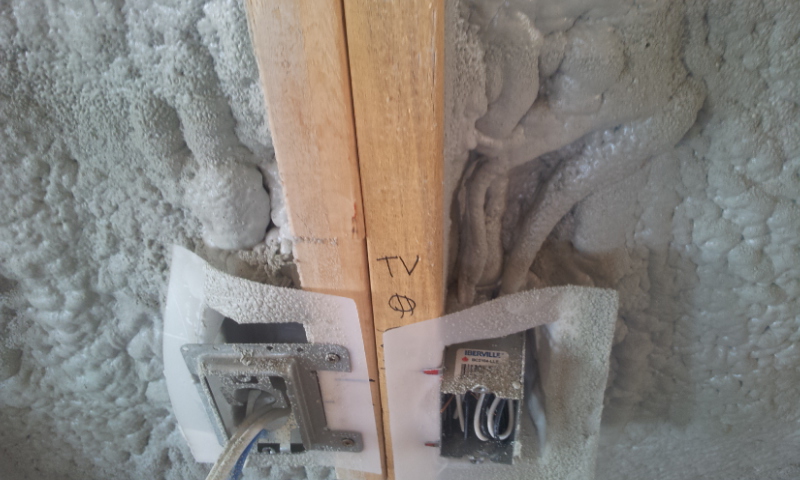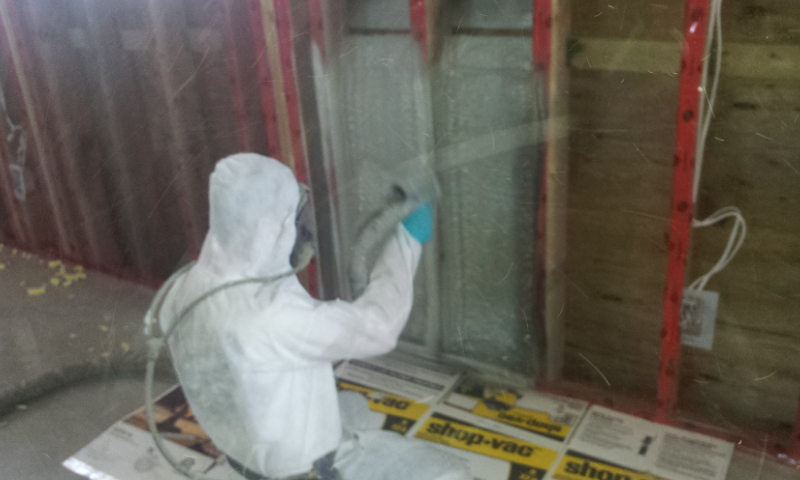
 Consider the benefits of spray foaming.
Consider the benefits of spray foaming.
Are you building or renovating your home. Have you heard about spray foam? This article will try to highlight the benefits and differences of spray foam verses conventional insulation.
I recently visited a home that was being insulated with spray foam. While this type of insulation seems new it has been around for decades and is only now catching on. While there are several manufacturers of spray foam there are two main types of foam you may come across. The first type is ½ pound, open cell foam. This foam expands up to 30 times once it is applied. This type of foam preforms better as a sound proofing material then 2 pound foam but does not have the same insulating value or vapor barrier characteristics as two pound foam. You guessed it, the second and most common type of foam is 2 pound foam. 2lb foam is applied both as an insulator and vapor barrier. This is a couple of the main advantages to spray foam insulation. This remainder of this article will focus primarily on 2lb foam.
The foam is applied between 50 -60 degrees Celsius and about 1200PSI. Once applied the foam expands to 50 to 100 times its volume. After a few minutes the foam is set up and has amazing insulating and vapor barrier qualities. The key to spray foam insulation is its ability to trap inert air bubbles inside the foam. The trapped air acts as a restrictive layer to radiant energy. This means it becomes a great insulation with a high R-value. Let’s look at this measuring tool we call R-value and what it means.
I always explain R-value in this way. If you are sitting inside reading this the air temperature around you is roughly 20 deg. C. If you are close to a steel or glass object such as a mirror or fridge and you touch it you will notice how much colder it appears. In reality it must be roughly 20 Deg. C if it is sitting in a room full of 20 degree air. So why does it seem so cold? The secret lies in the R-Value of the material. That means when your hand is in the air it loses heat at a certain rate because its heat energy travels through the air. When you touch a metal or glass surface the material readily transfers heat from your hand, making it feel cool. In other words it is a poor insulator. If you place your hand on a piece of foam it feels warm, this is because it reflects heat rather than absorbing it. This is the key to the spray foam advantage.
Let’s take a minute to compare 2 lb foam to batted insulation. First of all the R-value of spray foam is about R-5-7 per inch, thus a wall with 3 ½” of foam has an R-value of approximately R-17.5 – R-24.5. Batted insulation in the same 2×6 wall will be between R-20 and R-22. The cost of the foam is roughly 2-3 times more money to install. Here is where most people stop researching the benefits and make a decision based only on the R-value and price. As Paul Harvey used to say, “and now the rest of the story”. While R-value is important it is not the only consideration. If you research how heat energy moves you will find there are three primary means of heat transfer, Convection (through air movement), Conduction (through contact), and Radiation (energy waves). When you consider all the ways heat is gained or lost in a wall you will quickly see the spray foam advantage.
When R-value alone is considered, there is very little advantage to spray foam. When you begin to look at the resistance to convection, conduction and radiation of foam and batted insulation you will quickly see how well foam preforms overall verses the conventional insulation methods of batted insulation. The primary advantage of foam is how it expands into the crevices and seals the wall cavity. Even the most careful insulator and vapor barrier installer cannot come close to sealing the wall cavity as fully as spray foam does. Another advantage of spray foam is that it adds some rigidity and structure to the wall. Finally if spray foam is installed properly it will act as a vapor barrier thus eliminating the time consuming process of applying 6mm poly and tuck tape. All this adds up to one thing, when you are considering a type of insulation you should look at the cost benefits of spray foam.

Recent Comments